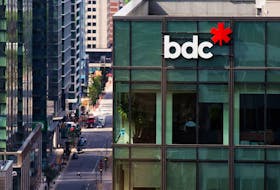Markets usually react to news in a millisecond. There are some market factors, however, that have a slower burn. Prices take longer to adjust because a trend creeps up on us, runs counter to our previous experience, or is expected to return to historical levels.
Skeptics like me have a rule that new economic and cultural trends are cyclical until proven otherwise. They can’t be declared sustainable until they’ve shown themselves to be more than just a cyclical upswing.
Bond Bonanza
The best example of a slow burn occurred in the 1980s and 1990s. At that time, inflation was declining steadily from double-digit levels. Interest rates followed along, as is usually the case, but they lagged. That’s because a generation of bond investors couldn’t get hyper-inflation out of their minds. Nor could they envision the Consumer Price Index (CPI) trending all the way down to low single digits.
The result of this skepticism, or should I say, slow adjustment, was that interest rates stayed well above inflation. “Real” yields (the excess yield above CPI) were exceedingly high (three to five per cent) for almost twenty years starting in the mid-1980s.
It was a wonderful time to be a bond investor. Yields were healthy and the price of longer-dated bonds steadily appreciated with the rate declines.
The value of future profits
Today, there’s an equally profound lag playing out. It too involves interest rates but is related to the stock market. It’s occurring in the shadows and goes a long way to explaining why prices have been on the rise. Let me take you behind the scenes.
A company’s value is derived from its future stream of profits and dividends. What the right number should be, however, is a matter of opinion. That’s because analysts forecast different futures and use different assumptions in their valuations. It’s the valuation part where the slow burn comes in.
Analysts value future profits by converting them into current dollars using a discounted-cash-flow calculation (DCF). A variable in the formula is the investor’s required rate of return. This ‘discount rate’, as it’s called, starts with the expected level of interest rates and is adjusted higher to compensate for the inherent uncertainty that goes with forecasting. Yogi Berra got it right when he said, “It’s tough to make predictions, especially about the future.”
Pick your poison
The key here is that the outputs from a DCF calculation are highly sensitive to the discount rate assumption. The lower it is, the more valuable future earnings are and vice versa.
The stocks that are most sensitive to this variable are the ones that are growing rapidly but are years away from meaningful profits. For instance, Shopify, Netflix, Tesla, Slack and Snowflake look extremely expensive when those future earnings are discounted at ten per cent. At five per cent it can be a much different story.
If we could track the average discount rate used by analysts, we’d see that it’s trending down, but doing so haltingly, and not keeping up with the decline in interest rates. The reality is, analysts don’t change the rate very often. They have a set number and use it in all their calculations.
The justification for keeping the required rate of return high (over 10 per cent) is clear. Stocks are unpredictable and there needs to be plenty of room for error. The problem, of course, is that it sets a high bar for what can get into the portfolio. Right now, not many stocks get over such a high hurdle.
A lower discount rate can also be justified given today’s near-zero interest rates, but there’s a trade-off here, too. It means more things need to go right. There’s less margin of safety if forecasts go awry.
Slow burn
There is no right answer. Investors who decreased their discount rate to reflect lower interest rates have been the winners in recent years. Growth has been more important than current profits. Only time will tell whether this pattern will persist. Will it turn out that indeed the ten percenters were too cautious, or were the five percenters turning a blind eye to the risks?
The good news is that as stock investors continue to bring down their discount rates, either enthusiastically or reluctantly, the stock market will continue to benefit from a valuation tailwind. A slow burn is a gift that keeps on giving.
Tom Bradley is chair and chief investment officer at Steadyhand Investment Funds, a company that offers individual investors low-fee investment funds and clear-cut advice. He can be reached at [email protected] .
Copyright Postmedia Network Inc., 2020







